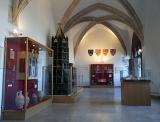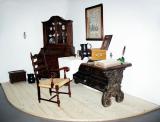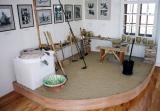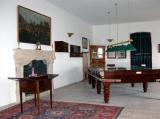2024. April 26. Friday
Kuny Domokos Museum - Tata
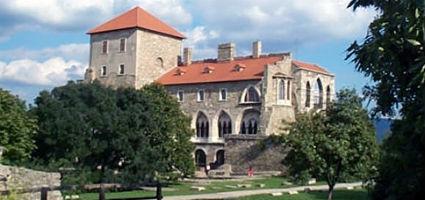 |
Address: 2890, Tata Váralja u. 1-3.
Phone number: (34) 381-251, (34) 381-251
E-mail: info@kunymuzeum.hu
Opening hours: K-V 9-18
|
The building of the castle is of a special interest. It was built from 1397 to 1409 on the territory of the Lackffy family where the Hills Vértes and Gerecse meet, on a cliff surrounded by swamps and water.
The castle belonged to the king from 1397. During the reign of Zsigmond of Luxemburg and Mathias Rex, it mainly served as a holiday chalet. Under Turkish reign, from the 16th century, Tata was tried to be included in the border fortress system defending the town of Győr. After 1568, the Italian fortress with bastions was built, however, it never became a real fortress.
In 1727, the count Eszterházy József (1682-1748) bought it. The royal architect Fellner Jakab (1722-1780) built the entrance in 1755. It is still the entrance to the fortress nowadays.
The so-called court magistrate house is situated above the bridge, along with the prison cellars and the chapel built for the inmates in the 19th century.
The Kuny Domokos Museum has been open since 1954 in the fortress. Its collection includes the Piarist collection established in 1912, as well as a significant archeology, natural science, local history, applied- and fine arts collection.
In 13 wards permanent exhibitions are open, of the Roman to the 19th century, including the history of the fortress. Two wards host temporary exhibitions.
The castle belonged to the king from 1397. During the reign of Zsigmond of Luxemburg and Mathias Rex, it mainly served as a holiday chalet. Under Turkish reign, from the 16th century, Tata was tried to be included in the border fortress system defending the town of Győr. After 1568, the Italian fortress with bastions was built, however, it never became a real fortress.
In 1727, the count Eszterházy József (1682-1748) bought it. The royal architect Fellner Jakab (1722-1780) built the entrance in 1755. It is still the entrance to the fortress nowadays.
The so-called court magistrate house is situated above the bridge, along with the prison cellars and the chapel built for the inmates in the 19th century.
The Kuny Domokos Museum has been open since 1954 in the fortress. Its collection includes the Piarist collection established in 1912, as well as a significant archeology, natural science, local history, applied- and fine arts collection.
In 13 wards permanent exhibitions are open, of the Roman to the 19th century, including the history of the fortress. Two wards host temporary exhibitions.
|
Programmes
|
|
